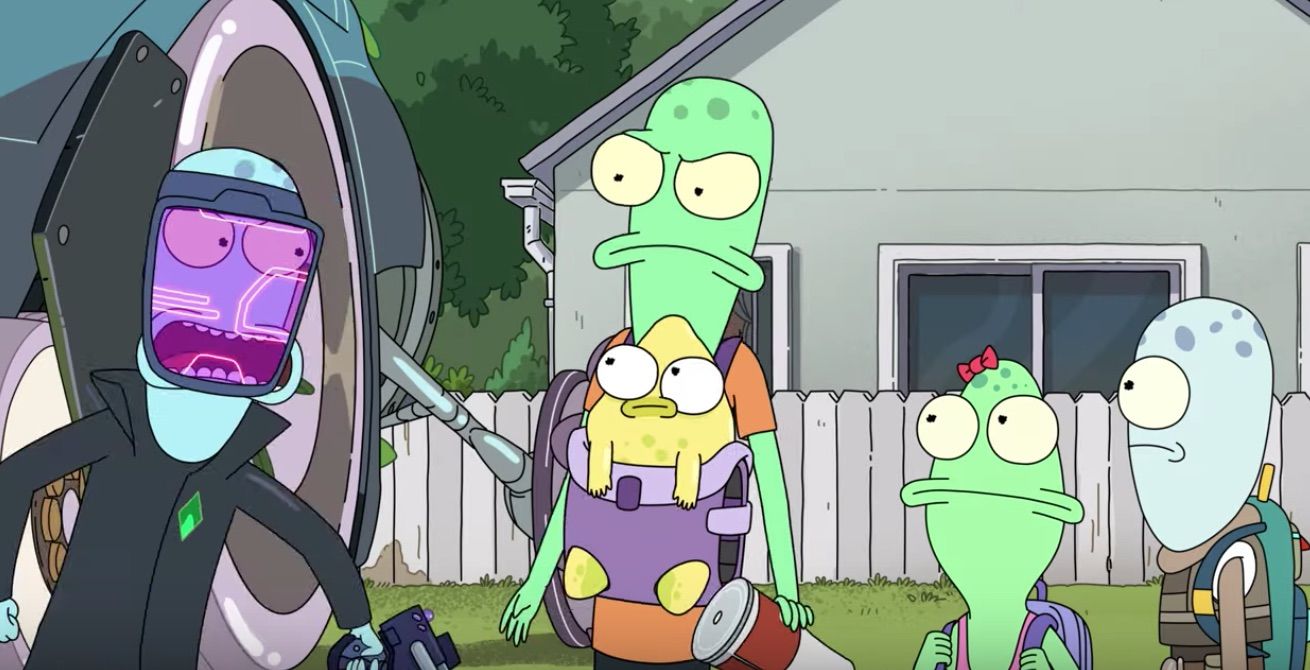Create a free profile to get unlimited access to exclusive videos, sweepstakes, and more!
Can you store data in DNA like Solar Opposites' weirdly adorable terraforming pupa?

Instead of the intergalactic misadventures of an alcoholic inventor and his grandson in Rick and Morty, Justin Roiland's new Hulu series, Solar Opposites, is a story of four aliens who, after the Superman-esque destruction of their homeworld, crash-land on Earth and have to make a new home. Literally, they have to make a new home, thanks to their pupa, a lemon-colored, slug-shaped organic computer programmed to terraform Earth into a more suitable home
It goes without saying that most of the antics on the sci-fi/comedy series fly in the face of reality, but is it actually possible to program DNA and create organic data storage?
TURNING ACGT INTO ZEROES AND ONES
The world is becoming more and more digital every day, as people watch movies, listen to music, store personal information, and post gobs of content on social media and other websites. That adds up. The research group IDC has predicted we’ll be creating 160 zettabytes of data every year, by 2025. For context, one zettabyte is equal to a billion terabytes. Which is to say, we’re creating a whole lot of digital information, and that information needs to be stored.
One way of solving this problem is through advancements in traditional computing and storage hardware. Anyone who’s been using computers for more than a few years knows that storage capacity improves on a pretty regular basis. You can by a thumb drive today which has more storage capacity than the average computer had a few years ago, and they’re not even that expensive.
The problem is, files can be corrupted. Hard drives are susceptible to physical damage, or they can just be lost. And what if you wanted to store a lot more data? Like, say, all of the data in the world. Or what if you wanted to save really important data and ensure it would be available to people thousands of years in the future? As reliable and impressive as our current data storage methods are, we just don’t have anything yet that fits that particular bill.
Although, actually, we do. And we always have had it. It's DNA.
At its core, DNA is just a data storage medium. Human DNA, a long, complex molecule, is made up of the nucleobases adenine, cytosine, guanine, and thymine, regularly seen as A, C, G, and T. Those four letters, when properly combined, create a code, a program, that can create a person. And each of us is incredibly complex. To realize that all of the information that makes you, uh, you, exists in a microscopic molecule inside each of your cells is staggering. It puts even our most compact storage devices to shame.
The double helix structure of DNA was first discovered in 1953 by James Watson and Francis Crick, but it wasn’t until the 1970s that we figured out how to successfully sequence that data. Even then, the road was long and hard.
The Human Genome Project began work on sequencing human DNA in 1990 and completed its work in 2003. It was a landmark achievement, the result of reading some three billion base pairs. That original project took 13 years to accomplish and cost roughly a billion dollars. Today, human DNA can be sequenced for $3,000 to $5,000 and can be done in a couple of days.
We’ve come a long way since Watson and Crick.
Armed with this knowledge and modern advancements in genetics technology, scientists have set their sites on solving the data storage problem by using the system nature has perfected over billions of years.
DNA data storage has a few advantages going for it. First, it’s compact. A single gram of DNA could store 215 petabytes of data. That is, however, what DNA is capable of, not what we can actually achieve. Scientists have been storing data in DNA for the better part of a decade and with current methods, it’s believed all of the world’s information could be stored in one room if converted to DNA.
The second thing DNA has going for it is longevity. While it does have a tendency to mutate over time, as evidenced by all of the diversity around us, it remains stable for incredibly long timescales. We’ve succeeded in sequencing the DNA of a 700,000-year-old horse. And that was without any intentional preservation. This goes to show that even in less-than-ideal circumstances, information stored in DNA would last an incredibly long time. Proper storage would only extend recovery times.
Finally, DNA isn’t going anywhere. For as long as humans are around, and as long as we continue our pursuit of knowledge, there will be people capable of reading DNA. If, on the other hand, something were to happen to humanity... well, then data storage would be the least of our worries.
Right now, the major hurdle is in sequencing and reading the data. While the process has become much faster over recent years, the process for encoding DNA — converting ones and zeroes into ACGT — and reading it back again, takes longer than the average person is willing to wait. This is one area where electronics currently have the upper hand. But if recent trends are any indicator, that won’t always be an issue. And we have good reason to hope that’s true.
Based on the amount of data being created today, and predicted trends, we’ll have used up all of our microchip-grade silicon by 2040.
We’re staring down the barrel of a real data storage crisis, in need of a solution. There’s something elegant about the notion that a problem of this magnitude and uniquely modern provenance might have a solution so old, and so common.
Turns out, making a terraforming alien isn’t the only way to reshape the world.














